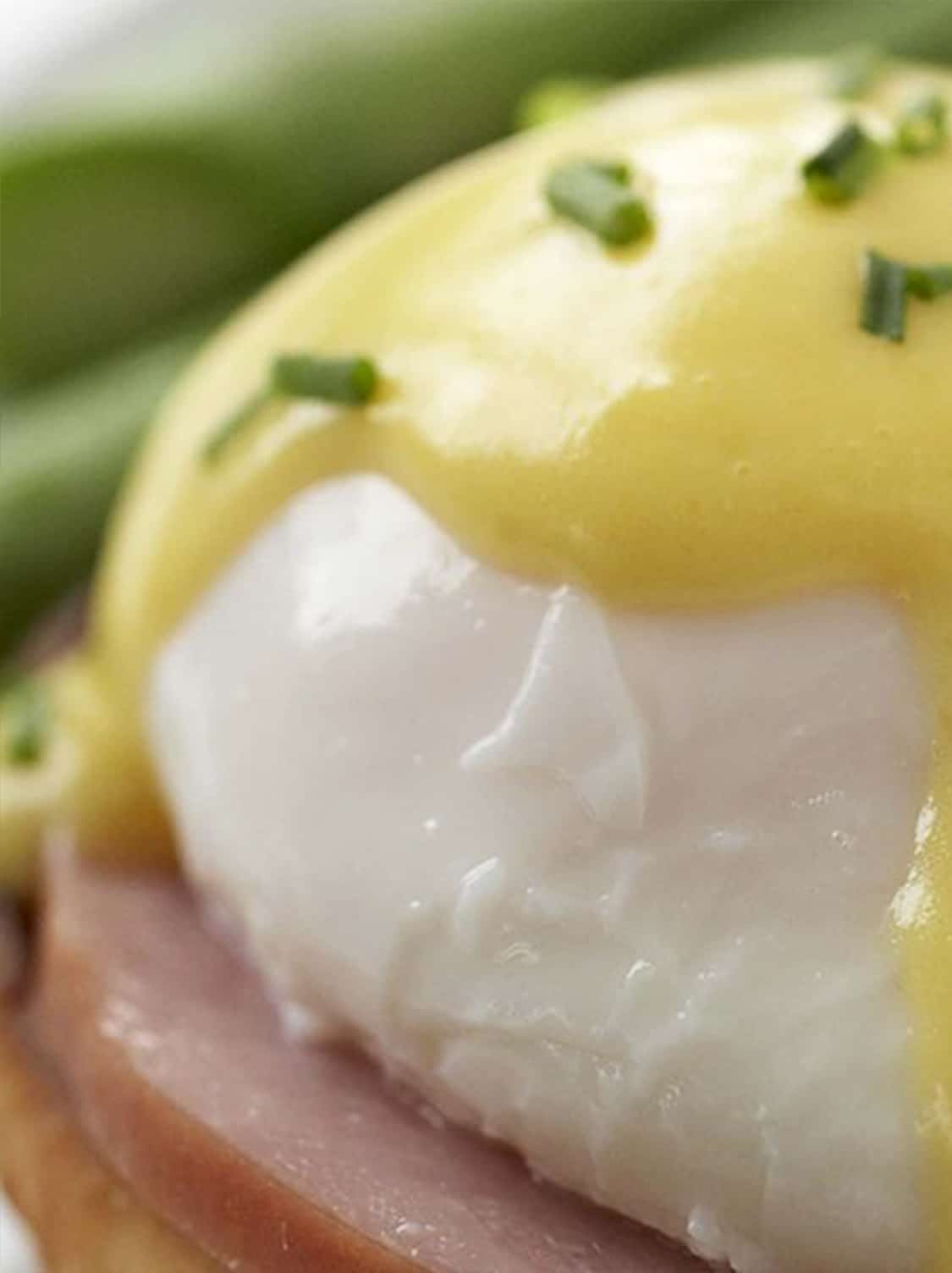

Directions
HEAT 2 to 3 inches of water in large saucepan or deep skillet to boiling. ADJUST heat to keep liquid simmering gently.
BREAK eggs one at a time into custard cup or saucer. Holding dish close to surface, SLIP egg into water.
COOK eggs until whites are completely set and yolks begin to thicken but are not hard, 3 to 5 minutes. Do not stir. LIFT eggs from water with slotted spoon. DRAIN in spoon or on paper towels. TRIM any rough edges if desired. SPRINKLE with salt and pepper. SERVE immediately.
Ingredients
- 2 - 4 large EGGS, cold
Tips
Poached eggs are perfect for a light lunch or dinner. Serve atop steamed vegetables, such as tender asparagus. The soft yolk creates a creamy sauce.
Use very fresh eggs for poaching. They hold their shape better and form fewer wispy threads or “angel wings” in the water.
Do not swirl the water when poaching eggs. This creates a vortex that will ruffle the delicate egg protein. Relatively quiet water that is gently simmering produces the best result.
Do not poach eggs ahead of time and hold them in the refrigerator.
Milk, broth, tomato juice, wine or even a pot of simmering soup, can be substituted for poaching water. Eggs will pick up color highlights from some liquids.
A simple saucepan and slotted spoon are all that’s needed for superb poached eggs. However, specialized poaching equipment — rings that corral eggs as they cook in liquid, pan inserts with nonstick egg-shaped cups, and steam-cooking electric egg cookers — are also available.
This recipe is an excellent source of protein and choline, and a good source of vitamin A, vitamin D and folate.
Per serving: 1/2 of recipe (2 eggs)
- Calories 143
- Total fat 10 g
- Saturated fat 3 g
- Polyunsaturated fat 2 g
- Monounsaturated fat 4 g
- Cholesterol 372 mg
- Sodium 287 mg
- Carbohydrates 1 g
- Fiber 0 g
- Sugar 0 g
- Protein 13 g
- Vitamin A 160 mcg
- Vitamin D 2 mcg
- Folate 47 mcg
- Choline 294 mg
- Calcium 57 mg
- Iron 2 mg
- Potassium 140 mg
To ensure food safety, eggs should be cooked until both the yolk and the white are firm. Consuming raw or undercooked eggs may increase your risk of foodborne illness, especially for those with certain medical conditions. For recipes that call for eggs that are raw or undercooked when the dish is served, use either pasteurized shell eggs that have been treated to destroy Salmonella, or use pasteurized egg products.
